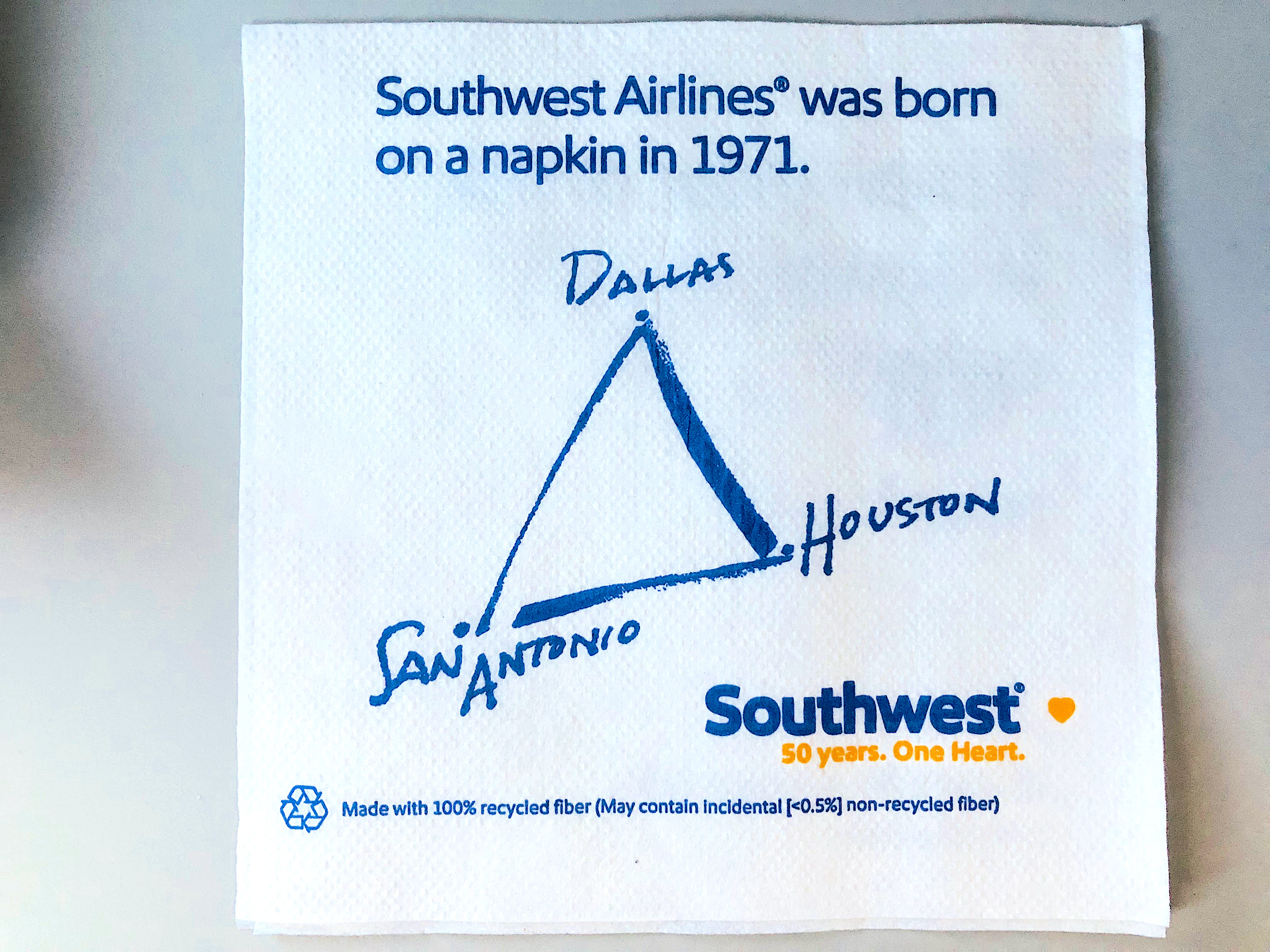
Throughout 2021, one of America’s most iconic companies is celebrating its 50th anniversary with a storytelling extravaganza.
That’s only fitting, because Southwest Airlines has proved the power of what I refer to as a Capital S Story ever since its original route map was outlined on a flimsy cocktail napkin in a dark, smoky bar (and yes, that is only one of many stories that define the company).
Southwest’s storytelling focus demonstrates why every organization has at least one great story to share, what I call the Capital S Story because it answers these questions: Why someone should buy from you, work for you, invest in you or partner with you.
I examine Southwest’s Capital S Story genius in bringing an archetypal story to life in my book, “Finding Your Capital S Story, Why Your Story Drives Your Brand.” Even if you’ve never flown Southwest, you know the attitude the airline brings. It is the classic outlaw hero – the Robin Hood who does everything differently than the villains to benefit passengers. Southwest doesn’t charge for bags, other airlines do. It doesn’t have change fees, other airlines do. You get the idea.
Southwest co-founder Herb Kelleher and his merry band of original co-conspirators didn’t just wake up one day and decide to become outlaws. No, if you know the history of the airline, well-funded and strong-willed competitors forced Southwest to be an outsider. And at every turn, the success of Southwest came because of its willingness to turn challenges into advantages.
One of Southwest’s anniversary efforts is a great example of bringing a great corporate story to life. In partnership with At Will Media and LA Times Studios (a non-editorial affiliate of the Los Angeles Times), Southwest produced a 20-episode podcast series that shares many of the best stories from its history, often in the words and voices of those who lived them. Even the title of the podcast, “Is This Seat Taken?” references one of those anti-airline behaviors that set Southwest apart: no assigned seating.
The episodes are stellar examples of how to bring a Capital S Story to life through the shared experiences of those who made the organization what it is, whether it’s remembrances of Herb Kelleher from his daughter Ruth Kelleher Agather, or Greg Wells, one of the people who helped the airline figure out how to be so fast at turning around planes between flights (hint: like nearly everything else in the Southwest story, it has to do with overcoming adversity).
Unlike many corporate giants, Southwest has adopted storytelling as, well, part of its story. In 1982, when author Winifred Barnum-Newman wrote "Gumwrappers and Goggles," a children’s book that seemed to tell the story of Southwest’s early years through the travails of a mythical little jet named TJ Luv (who looked remarkably like a pudgy Southwest Boeing 737), the airline commissioned a musical based on the book called "Show Your Spirit," and sent it on a multi-city tour.
At its founding, Southwest’s competitors tried to kill it by collaborating with elected officials to force it to fly from Dallas Love Field, which had been replaced by what was then the newer, much larger Dallas Fort Worth International Airport.
Once again, Southwest laughed at adversity. In its early years, passengers didn’t get peanuts or mixed drinks; instead they got LUV bites and LUV potions. And when Southwest became a publicly traded company, it’s no surprise that the stock symbol it chose was LUV. The love behind LUV isn’t a cutesy marketing slogan; it’s a lived value in the organization, represented today by the airline’s focus on kindness initiatives.
As part of its 50th anniversary celebration, Southwest has actively embraced storytelling with two other major efforts:
First, by commissioning a contest for aspiring writers, in which the grand prize, in addition to cash, was the opportunity to work with author Beth Reekles, whose Kissing Booth books were the inspiration for three Netflix movie adaptations.
Second, by making the website southwest50.com home to all the storytelling highlights from the company’s first half-century.
What does all this mean for you as a leader of your organization?
Well, certainly, if you’re a Southwest fan, it gives you some additional reasons to share the LUV and geek out on the airline.
Even if you’ve never flown Southwest, the storytelling talent of this major corporation demonstrates how a Capital S Story can be (and in my mind should be) woven into the fabric of an organization in such a way that it becomes a critical ingredient to its success.
Your organization may not be a publicly traded large airline. You may not believe you have stories to share that compare to those of Southwest. I guarantee that while you may not be Southwest, you definitely have a Capital S Story worth sharing.
I know this because at our firm, we work primarily with providers of complex services who seek to connect with decision makers inside the C suite of middle-market companies. Think accounting firms, law firms, engineering firms, complex biopharma companies. For these organizations, a clear and compelling story is even more important than for a well-known, publicly traded, consumer-facing company. The more complex your products or services, the more you need to share your story in a way that is unique, compelling and memorable.
Regardless of your industry, there’s a lot you can learn from how Southwest has employed storytelling. For example, while the Southwest story is far from over, there have already been a few happy endings along the way. Remember those competitors that tried to kill Southwest in the beginning? Despite diligent efforts to eliminate their upstart, outlaw competitor, Braniff International and Continental Airlines ultimately went out of business.
